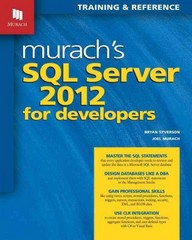Question
Consider a system with N blocks of storage, each of which holds one unit of information (e.g. an integer, character, or employee record). Initially, these
Consider a system with N blocks of storage, each of which holds one unit of information (e.g. an integer,
character, or employee record). Initially, these blocks are empty and are linked onto a list called freelist.
Three processes communicate using shared memory in the following manner:
Shared Variables: freelist, list-1, list-2: block (where block is some data type to hold items)
PROCESS #1
var b: pointer to type block;
while (1)
{
b:= unlink(freelist);
produce_information_in_block(b);
link(b, list1);
}
PROCESS #2
var x,y: pointer to type block;
while (1)
{
x:=unlink(list-1);
y:=unlink(freelist);
use_block_x_to_produce info_in_y(x, y);
link(x, freelist);
link(y, list-2);
}
PROCESS #3
var c: pointer to type block;
while(1)
{
c:=unlink(list-2);
consume_information_in_block(c);
link(c, freelist);
}
Using the appropriate libraries, rewrite the pseudo-code as actual Unix/Linux processes, using semaphores to
implement the necessary mutual exclusion and synchronization. The solution must be deadlock-free and
concurrency should not be unnecessarily restricted. Further, you will have to implement a correct representation
of the three lists so that access to them is shared among the processes
Step by Step Solution
There are 3 Steps involved in it
Step: 1

Get Instant Access to Expert-Tailored Solutions
See step-by-step solutions with expert insights and AI powered tools for academic success
Step: 2

Step: 3

Ace Your Homework with AI
Get the answers you need in no time with our AI-driven, step-by-step assistance
Get Started


